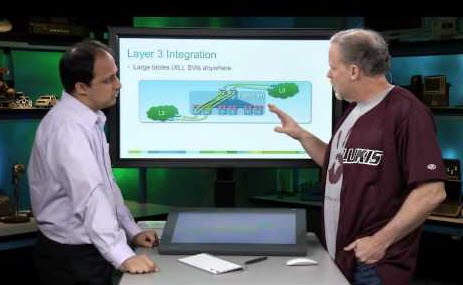
The Nexus switch line, including Nexus 5000 and Nexus 7000 switches, provides various features and capabilities configuring a Layer 2 network. In the chapter “Layer 2 Support and Configurations,” from the book NX-OS and Cisco Nexus Switching: Next-Generation Data Center Architectures by Kevin Corbin, Ron Fuller and David Jansen, learn about store-and-forward vs. cut-through switching, as well as Spanning Tree options, VLAN configuration and implementing fabric extenders with Cisco Nexus switches. The chapter begins by outlining basic Layer 2 functionalities, including basic traffic forwarding decision making within the switch.
It also explains how to implement VLANs and Private VLANs using of Nexus switches. At Layer 2, VLANs segment traffic to define failure domains and pinpoint security concerns. PVLANs enable administrators to subdivide VLANs, offering another level of security. This chapter covers VLAN and PVLAN configuration and verification and the VLAN Trunking Protocol (VTP).
The chapter also runs down the use of Spanning Tree Protocol (STP) in Layer 2 switching architectures. The Nexus switch series implements two forms of standards-based STPs, which are Rapid Per-VLAN Spanning Tree (Rapid-PVST/802.1w) and Multiple Spanning Tree (MST/802.1s). This chapter also discusses additional spanning-tree configurations beyond Rapid-PVST and MST, including port cost and port priority.
The spanning-tree toolkit covered in this chapter focuses on NX-OS extensions, which can improve spanning tree performance and security. Some of these enhancements include BPDUFilter, BPDUGuard, RootGuard, LoopGuard, Dispute Mechanism and Bridge Assurance.
Finally, the authors address how the Nexus 7000 and 5000 series offer Virtual Port Channels (vPCs) which enable links that are connected to different devices to be aggregated into one link. The additional benefits vPCs offer include improved bandwidth utilization and increased elimination of spanning-tree blocked ports through loop-free topology. Configuration of the vPC is done by associating two Nexus devices into a vPC domain. In this domain, information is transferred between vPC peers across two links which are the vPC peer-keepalive and vPC peer links.
Read the chapter in its entirety to learn more about Nexus switches and Layer 2 switching, as well as additional topics including Unidirectional Link Detection.
https://searchnetworking.techtarget.com/feature/Cisco-Nexus-switches-Layer-2-configuration-strategies
More Related Tips:


